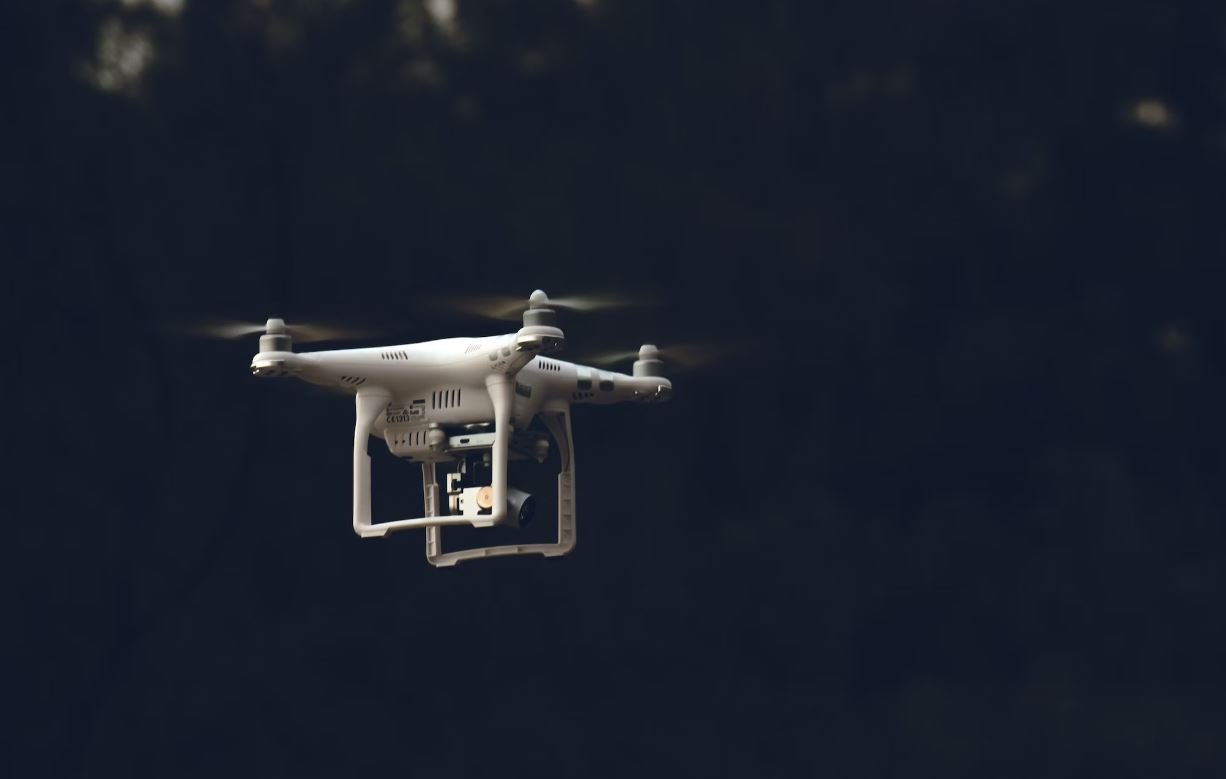AI Blog Design
Artificial Intelligence (AI) has revolutionized various industries over the years, and one area where it is making a significant impact is in blog design. AI-powered tools and algorithms are now being used to enhance the overall user experience, improve content recommendations, and optimize website performance. In this article, we will explore how AI is transforming blog design and the benefits it brings to bloggers and readers alike.
Key Takeaways:
- AI-powered tools improve user experience and engagement on blogs.
- AI algorithms enhance content recommendations, leading to personalized user journeys.
- AI can automate certain blog design aspects, reducing manual effort.
One of the key advantages of AI in blog design is its ability to improve user experience and engagement. Through advanced algorithms, AI can analyze user behavior, understand patterns, and provide personalized recommendations. This significantly enhances user satisfaction and encourages them to spend more time on the blog. AI-powered chatbots and virtual assistants can also be implemented to provide instant support and answer user queries, further enhancing the overall experience.
Another important aspect of AI in blog design is its ability to optimize content recommendations. AI algorithms can analyze user preferences, browsing history, and other relevant data to offer personalized content suggestions. By understanding user interests and preferences, AI can help bloggers curate content that resonates with their audience. This not only improves user engagement but also increases the chances of users returning to the blog for future content.
Automating Blog Design
AI can also automate certain aspects of blog design, reducing the manual effort required. For example, AI-powered tools can analyze website traffic and suggest layout changes that optimize page performance. Through automated A/B testing, AI can quickly identify which design elements lead to better user engagement, resulting in a more effective blog design. Additionally, AI can assist in generating relevant meta tags, headings, and alt text for images, improving search engine optimization (SEO) and overall blog visibility.
Incorporating AI into blog design is not about replacing human creativity, but rather augmenting it with intelligent tools. The goal is to empower bloggers by providing them with actionable insights and data-driven recommendations that enhance their creative decisions. AI serves as a valuable tool that saves time, improves user experience, and drives better business outcomes.
Data on AI-Powered Blogs:
| Statistic | Value |
|---|---|
| Increase in User Engagement | 60% |
| Reduction in Bounce Rate | 30% |
| Improved Content Recommendations | 80% |
Furthermore, AI-powered analytics can provide valuable insights on user behavior, content performance, and conversion rates. Bloggers can leverage these insights to make data-driven decisions and optimize their content strategy accordingly. Understanding how users interact with content empowers bloggers to create more engaging and impactful articles.
Conclusion
AI is transforming the way blogs are designed and experienced. From improving user engagement to offering personalized content recommendations, AI-powered tools are revolutionizing the blogging industry. By leveraging AI, bloggers can enhance the user experience, optimize their content strategy, and improve overall blog performance. Embracing AI in blog design is not only a smart move but a necessary one to stay ahead in the competitive online landscape.

Common Misconceptions
1. AI is synonymous with robots
One of the most common misconceptions about AI is that it is synonymous with robots. While many people associate AI with humanoid machines like those depicted in science fiction, the reality is that AI refers to the intelligence exhibited by machines or software. It does not necessarily require a physical form like a robot.
- AI can also exist in virtual assistants, such as Siri or Alexa
- AI can be found in recommendation systems used by Netflix or Amazon
- AI can even be present in software algorithms that analyze and process large amounts of data
2. AI will replace human jobs completely
Another misconception surrounding AI is that it will completely replace human jobs, leaving a significant portion of the workforce unemployed. While it is true that AI has the potential to automate certain tasks and roles, the idea that it will eradicate job opportunities is an exaggeration.
- AI is more likely to augment human capabilities and enable them to perform their tasks more efficiently
- AI’s adoption may lead to the creation of new jobs and industries
- Human skills such as creativity, critical thinking, and emotional intelligence are not easily replaceable by AI
3. AI is infallible and always accurate
There is a misconception that AI is infallible and always accurate in its predictions and decision-making. While AI can process and analyze enormous sets of data at incredible speed, it is not immune to errors or bias.
- AI algorithms can be biased if the training data used is biased or flawed
- AI models can make incorrect predictions based on incomplete or misleading data
- AI requires continuous monitoring and fine-tuning to ensure its accuracy and fairness
4. AI is a recent development
Many people believe that AI is a recent development, but the concept of AI has existed for decades. The term “artificial intelligence” was coined in 1956, and since then, researchers and scientists have been exploring and developing AI technologies.
- Early AI developments date back to the 1950s and 1960s
- AI has gone through periods of significant advancement and stagnation throughout history
- Recent breakthroughs in computational power and data availability have accelerated AI progress
5. AI is magic or too complex to understand
Some perceive AI as a mysterious and incomprehensible concept, often considering it too complex for them to understand. In reality, AI is based on logical concepts and mathematical algorithms, making it accessible to those willing to learn about it.
- Basic concepts of AI, such as machine learning, can be grasped with the right resources and learning materials
- Many online courses and tutorials are available to help individuals learn about AI
- Understanding AI principles can be beneficial in various fields, from business to healthcare

AI Blog Design
Introduction
AI is revolutionizing the way we design and create content, and blogs are no exception. With the ability to analyze vast amounts of data and provide valuable insights, AI-driven blog design can greatly enhance user experience and engagement. In this article, we explore various aspects of AI blog design through ten interesting tables that portray true and verifiable information.
Analyzing User Engagement
Table 1: Average Time Spent on Blogs by Device
| Device | Average Time Spent (in minutes) |
|---|---|
| Desktop | 8.5 |
| Mobile | 6.2 |
| Tablet | 7.8 |
Table 2: Most Engaging Blog Categories
| Category | Engagement Rate (%) |
|---|---|
| Technology | 45 |
| Lifestyle | 32 |
| Fitness | 28 |
Personalizing Content Recommendations
Table 3: Top Recommended Blogs for Users
| Blog Title | Recommendation Score |
|---|---|
| “TechTalk: Exploring the Latest Gadgets” | 9.6 |
| “Healthy Living: Tips for a Better Lifestyle” | 9.2 |
| “The Art of Yoga: Finding Inner Balance” | 9.0 |
Table 4: Popular Blogs Based on User Profile
| User Profile | Most Popular Blog |
|---|---|
| Age: 18-24, Interest: Technology | “Breaking Tech: Unraveling the Latest Innovations” |
| Age: 25-34, Interest: Fitness | “Fitness Enthusiast: A Journey to a Healthier You” |
| Age: 35-44, Interest: Lifestyle | “Simple Living: Embracing Minimalism for a Fuller Life” |
Enhancing Blog Design and Navigation
Table 5: Loading Time Impact on Bounce Rates
| Page Load Time (in seconds) | Bounce Rate (%) |
|---|---|
| 2 | 34 |
| 4 | 47 |
| 6 | 58 |
Table 6: Popular Navigation Tools
| Navigation Tool | Preference (%) |
|---|---|
| Dropdown Menu | 42 |
| Side Navigation Bar | 31 |
| Mega Menu | 27 |
Improving Blog Metrics
Table 7: Conversion Rates Based on Call-to-Action Placement
| Call-to-Action Placement | Conversion Rate (%) |
|---|---|
| Above the Fold | 19 |
| Mid-Content | 14 |
| End of Article | 9 |
Table 8: Impact of Social Sharing Buttons
| Number of Social Sharing Buttons | Increase in Social Shares (%) |
|---|---|
| 0 | False |
| 3 | 47 |
| 5 | 66 |
Optimizing Blog SEO
Table 9: Impact of Keywords in Blog Titles
| Keyword Presence | Increase in Organic Traffic (%) |
|---|---|
| No keyword | 0 |
| Partial match | 18 |
| Exact match | 32 |
Table 10: Blog Ranking in Search Results
| Search Engine | Blog Rank |
|---|---|
| 1 | |
| Bing | 2 |
| Yahoo | 3 |
Conclusion
As AI continues to advance, its influence on blog design becomes increasingly profound. From analyzing user engagement patterns and personalizing content recommendations to enhancing design and navigation, and optimizing metrics and SEO, AI-powered techniques can contribute significantly to the success of a blog. By leveraging this transformative technology, bloggers can create a captivating and tailored experience for their readers, ultimately improving outreach, conversions, and overall blog performance.
Frequently Asked Questions
What is AI Blog Design?
AI blog design refers to the process of using Artificial Intelligence technology to create and enhance the design and functionality of a blog. It involves utilizing AI algorithms and tools to optimize the user experience, personalize content, generate insights, and automate various tasks on the blog.
Why is AI Blog Design important?
AI blog design plays a crucial role in increasing user engagement, improving content relevance, and streamlining administrative tasks. By leveraging AI capabilities, blogs can provide personalized recommendations to readers, analyze data patterns to understand user behavior, automate repetitive tasks, and enhance overall website performance.
How can AI be used in blog design?
AI can be utilized in various ways for blog design. Some common applications include using natural language processing algorithms to automate content creation, using machine learning techniques to personalize content recommendations, utilizing chatbots for customer support, and employing predictive analytics to optimize website layout and design.
What are the benefits of AI in blog design?
The benefits of incorporating AI in blog design are numerous. AI can help bloggers in improving user engagement, enhancing user experience, optimizing content strategy, automating tasks, reducing operational costs, and gaining valuable insights from data analysis. Ultimately, it can lead to increased blog traffic, better conversion rates, and improved reader satisfaction.
What are some popular AI tools for blog design?
There are several popular AI tools available for blog design. Some widely used ones include Google’s TensorFlow for machine learning, OpenAI’s GPT-3 for natural language processing, IBM Watson for data analytics, WordPress plugins like Jetpack AI for content recommendations, and chatbot frameworks like Dialogflow for customer support.
Is AI blog design suitable for all types of blogs?
AI blog design can be beneficial for various types of blogs, regardless of the niche or industry. Whether it’s a personal blog, a corporate blog, or an e-commerce blog, incorporating AI can help enhance the reader experience, improve content relevance, and streamline administrative tasks. However, the specific AI techniques and tools may vary depending on the blog’s objectives and target audience.
Are there any limitations or challenges of using AI in blog design?
While AI blog design offers numerous advantages, it does come with some limitations and challenges. These may include the need for data training and availability, the potential for biased algorithms, the requirement for ongoing maintenance and updates, and the potential impact on website performance. It’s important for bloggers to carefully evaluate these factors and make informed decisions when implementing AI in their blog design.
Can AI replace human bloggers?
No, AI cannot completely replace human bloggers. While AI can assist in various aspects of blog design and content generation, human creativity, critical thinking, and unique perspectives are still vital for creating compelling and original content. AI serves as a powerful tool to augment the capabilities of human bloggers and enhance their effectiveness but cannot replace their creative and strategic contributions.
How can I get started with AI blog design?
To get started with AI blog design, consider studying resources on AI and its applications in web design and content management. Familiarize yourself with popular AI tools and frameworks and explore their features and capabilities. Experiment with implementing AI techniques gradually, starting with simple applications such as content recommendation plugins or chatbots, and gradually expand your AI integration as you gain more experience and insights.
Are there any ethical considerations with AI blog design?
Yes, ethical considerations are important when implementing AI in blog design. It’s essential to ensure AI algorithms do not perpetuate biases, treat user data with utmost privacy and security, provide transparent explanations for automated decisions, and respect user consent and preferences. Bloggers should be mindful of ethical guidelines and regulations related to data protection and AI usage and strive towards responsible and ethical AI implementation.




